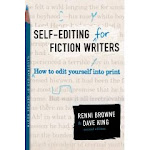- So let me say first—be skeptical of anyone who quotes an ALWAYS or NEVER rule of writing. Off the top of my head, I can’t think of a single rule that can’t occasionally be broken for a good reason.
- Second, let me be quick to add that you need to know how to work within the rules before you can effectively break them.
- Third, here’s an important quote to remember. I’ve heard it attributed to several editors and I believe it’s applicable. “After you’ve made your first million you can make up your own rules—until then, you’ll follow ours.”
Jill sat at the small table, twisting the napkin in her lap and trying not to stare every time the restaurant door opened. She couldn’t imagine why she’d let Susan talk her into a blind date, but she had and now here she sat, waiting for Nathan to show up. She forced as smile as the waiter refilled her water glass.
“Can I get you anything else while you wait?” Sam disliked waiting on a table with a blind date. His tip depended on so much he couldn’t control. If the date went well, great. If not . . . well all the excellent service in the world couldn’t make up for that.
Jill sat up a little straighter as a tall man approached her table. “Are you Jill?”
“Nathan?” She mentally crossed her fingers. Susan hadn’t exaggerated his good looks.
Sam scooted backward to let Nathan take a seat. “May I get you a drink?”
“Just water, thanks.” Relief quieted the butterflies in Nathan’s belly. Jill was quite beautiful—perhaps this wouldn’t be a waste of time after all.
This scene is a perfect example of HEAD HOPPING—a definite no-no in POV. Head hopping is where the reader knows the thoughts or is in the head of more than one character in a scene. You can see that in this scene we start out in Jill’s head, move to the waiter’s and end up in Nathan’s.
I can already hear the groaning from some of you. When I teach this workshop I barely get the example finished before these comments reach my ears.
“How else is the reader going to know what’s going on?”
“I have to be able to show what’s happening!”
In my humble opinion, Head Hopping is the lazy writer’s way to tell the story. Before you start throwing rotten tomatoes, let me explain. As an author we have an amazing ability—a gift even—we read minds, the minds of our characters. And we can be tempted to think that for the reader to truly understand and GET the story, we have to share this gift.
Not true. And here’s why. You and I go through life without one shred of mindreading ability. Yet, we’re able to GET what’s going on and figure out what’s happening. We’re not handicapped by this lack. In fact, most people I know get along better without it. As a writer, our job is to let the reader EXPERIENCE the details in a given scene and draw their own conclusions. If we write the sensory details well, they’ll have no trouble at all.
Here’s the same scene rewritten.
Jill sat at the small table, twisting the napkin in her lap and trying not to stare every time the restaurant door opened. She couldn’t imagine why she’d let Susan talk her into a blind date, but she had and now here she sat, waiting for a stranger to show up. She forced as smile as the waiter refilled her water glass.
“Can I get you anything else while you wait?” He fingered his order pad and let out a small sigh.
“No thank you.” Jill figured it couldn’t be easy to wait on a couple who were on a blind date. She caught a movement and sat up a little straighter as a tall man approached her table.
He cleared his throat. “Are you Jill?”
“Nathan?” She mentally crossed her fingers. Her friend hadn’t exaggerated his good looks.
Sam scooted backward to let Nathan take a seat. “May I get you a drink?”
“Just water, thanks.” Nathan grinned. “I have to admit I was worried.” He cocked an eyebrow. “But for once my brother was right on target.”
See, it is possible to convey what everyone's thinking without butchering POV. Here’s a quick check list to help round out the details.
- Use all five senses.
- Describe the setting details through the perception of the POV character.
- Let the interesting parts of the story happen WITHIN the quotation marks.
- Don’t be afraid to leave some things out—it will keep the reader interested in turning the page.












Wonderful post. Thank you, Edie. :-)
ReplyDeleteVery thoughtful blogg
ReplyDelete